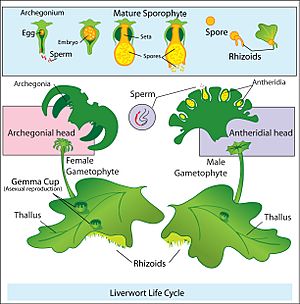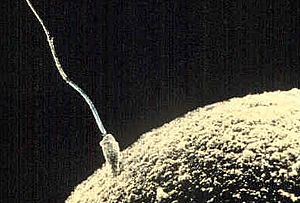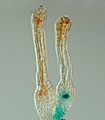Fertilization facts for kids

Fertilization is a key step in how living things reproduce. It happens when a male's tiny sperm cell joins with a female's ovum (or "egg") cell. This joining creates a new cell called a zygote. The zygote then starts to grow and develop into an embryo.
Fertilization happens in many different living things, including animals (like humans and birds), plants, fungi, and tiny protists. It's a process that helps create new life. When the sperm and egg join, they combine their genetic information, which helps the new organism grow with traits from both parents.
Contents
Fertilization in Animals
In animals, there are two main ways fertilization can happen: internal and external.
Internal Fertilization
Internal fertilization means the sperm and egg join inside the female's body. This happens in many animals, including mammals (like humans, dogs, and cats), birds, and reptiles (like snakes and lizards).
During internal fertilization, the male and female animals usually come together for mating. Sperm cells travel from the male into the female's body. One sperm then joins with an egg inside the female. After fertilization, some animals, like humans and most mammals, give birth to live babies. Other animals, like birds, most reptiles, and some mammals such as the Platypus, lay eggs that hatch later. These eggs are usually fertilized before they are laid.
External Fertilization
External fertilization means the sperm and egg join outside the female's body, usually in water. This is common for amphibians (like frogs) and most fish.
For external fertilization, the male and female release their sperm and eggs into the water at the same time. The sperm then swim to find and fertilize the eggs in the water.
Related topics
Images for kids
-
Red-veined darters (Sympetrum fonscolombii) flying together. The eggs are fertilized as they are laid, one at a time.
See also
 In Spanish: Fecundación para niños
In Spanish: Fecundación para niños







